TOP 10 delicious recipes for preparing beet tops for the winter
Beet tops are perceived by most gardeners as a waste that must be removed after harvest. In fact, green leaves are a valuable source of nutrients and can be used as a raw material for conservation. To get tasty blanks for the winter, just find out what recipes with beet tops exist.
Content
The composition and benefits of beet tops
Beetroot belongs to the versatile types of horticultural crops, since leaves and roots are used for food. Several centuries ago, only tops were used for food, and the underground part was intended only for medical purposes. Today the situation is exactly the opposite and, basically, roots are used for food, and the leaves, at best, are used for livestock feed. This situation deprives a person of a valuable source of vitamins and nutrients.
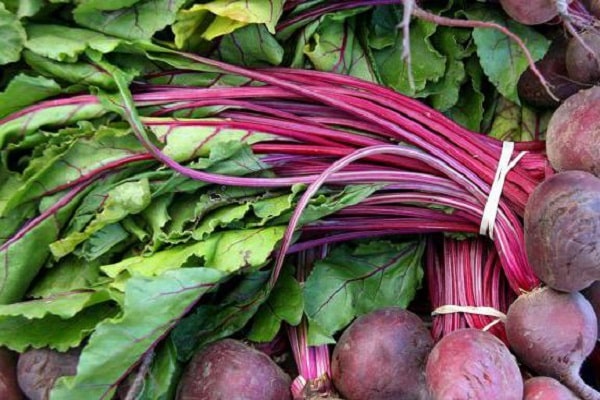
The beet tops contains a large amount of vitamins, it contains folic acid, which is necessary during the period of conception and bearing a child. By eating the leaves, a person is able to fill the body with a huge list of chemical elements, including phosphorus, calcium, magnesium, iodine and zinc.
Doctors advise including beet tops in the diet if you have the following problems:
- pathology of the cardiac system;
- violation of the elasticity and patency of blood vessels;
- malfunctions of the endocrine system;
- anemia, problems with blood composition;
- peptic ulcer, gastritis.
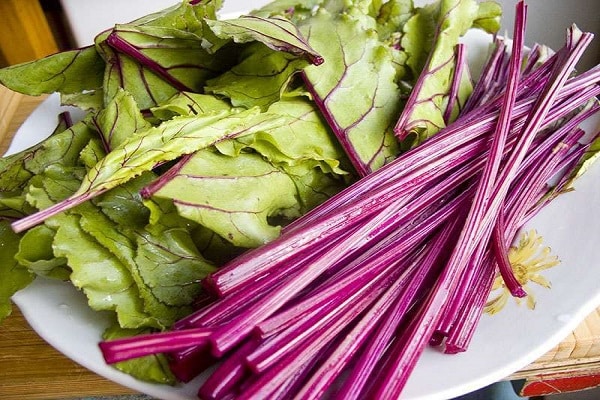
Regular use of tops helps to normalize metabolism and improves blood circulation, which has a beneficial effect on human well-being. Due to the presence of choline in the greens, positive changes are observed in the functioning of the liver, since the active element prevents the formation of fatty formations.
Improvements in the functioning of the digestive system are due to pectin, which blocks the action of harmful bacteria in the intestines.
Winter preparations are an excellent substitute for fresh greens, which allow you to get a valuable product in the cold period, a person gains the opportunity at any time to enrich the diet with tasty and healthy dishes. Canned beet tops can be used as a snack, an addition to side dishes, as a dressing for soups or an ingredient in a salad.
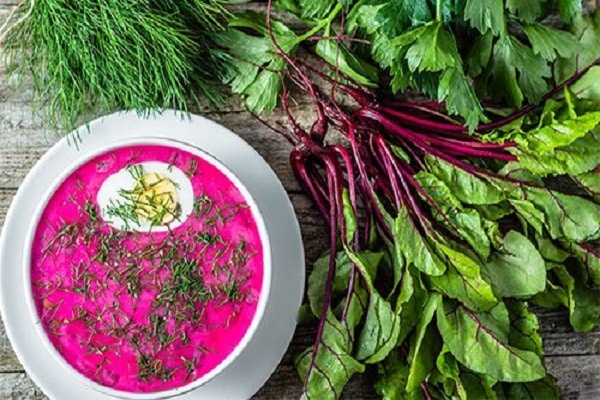
We prepare the main ingredients
For salads and fresh tops, it is recommended to harvest the early leaves, as they become tough during harvest.The harvest can also be made from late tops, but heat treatment is carried out to soften it. Cloudy weather without rain is chosen for harvesting. If the vegetables were fed with nitrates, then it is required to cut off 5 centimeters of the cutting at the base, it is in this place that their accumulation is observed.
After collecting, the leaves are thoroughly washed, excess debris and greenery with obvious signs of damage are removed. To facilitate the process, you can put the tops in a bowl of water for a couple of minutes, all small specks and light foreign objects will float up, so it will be easy to remove them.
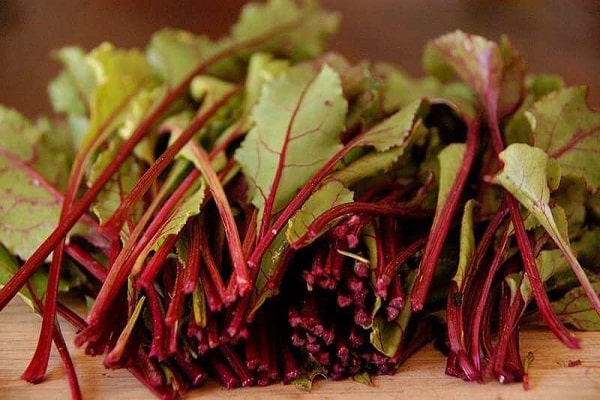
Recipes for preparing blanks for the winter
Today, there are many uses for beet tops. Gardeners often use fresh herbs in salads and add to soups. The method of drying leaves and freezing them is no less common. To preserve the qualities of a plant in winter, they use:
- fermentation;
- pickling;
- canning.
When choosing a cooking recipe, it should be borne in mind that heat exposure reduces the value of the product. At the same time, hot preservation methods provide the beet tops with the longest possible storage.
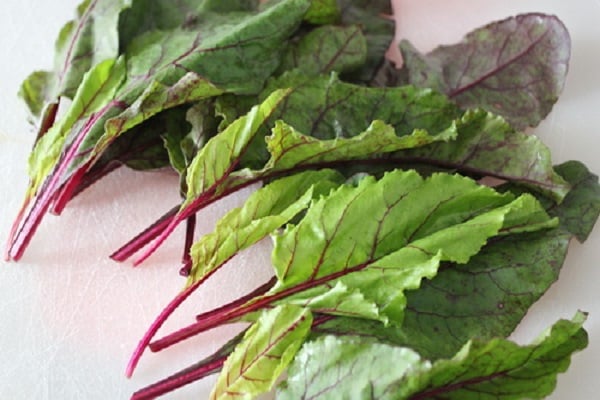
Dressing for borscht
It is not difficult to prepare a dressing for borscht, and in the future its use significantly saves the preparation time of the soup. The blank can be used not only as an ingredient in a dish, but also as a regular salad.
The recipe assumes the use of the following components:
- beets - 1 kilogram;
- water - 200 milliliters;
- tops - 500 grams;
- onions, heads - 1 kilogram;
- carrots - 1 kilogram;
- tomatoes - 1 kilogram;
- salt - 1.5 tablespoons;
- sugar - 1 tablespoon;
- vinegar 70% - ½ teaspoon.
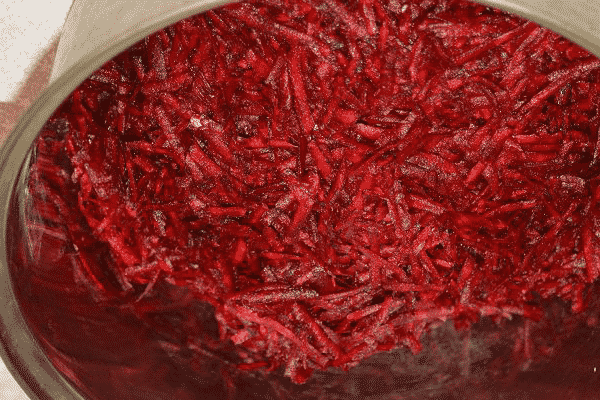
The sugar and salt content of the recipe must be adjusted as beets and tomatoes can have different sweetness and acidity. The type and shape of cutting vegetables are chosen depending on their own preferences, in most cases, the shape of slices or cubes is chosen.
First, a little sunflower oil is poured into a saucepan, carrots and onions are fried until the vegetables become soft. Then add the beets, add water and stew for 15 minutes. Tomatoes, sugar are added and kept on simmering for another 10 minutes. Salt, vinegar are added and the mixture is thoroughly mixed, keeping on fire until the beets are ready. The tops are added last, leaving to simmer for 5 minutes. After boiling, the mixture is placed in sterilized jars.
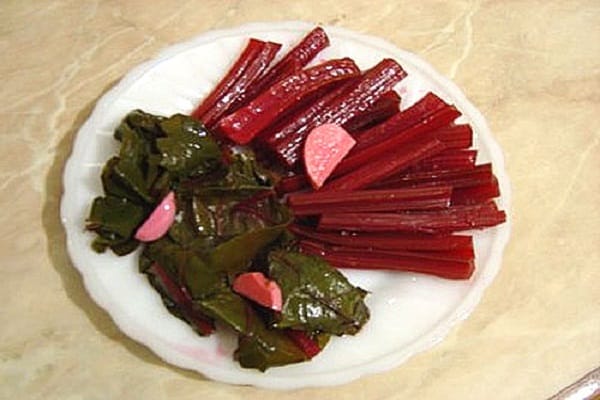
Canned beet tops
Beet leaves, for further use in borscht, can be cooked in just a few minutes, so the method is called "five minutes". The leaves are cut, placed tightly in jars and poured over with hot saline solution.
Salt and sugar are used to taste, the proportion is considered standard, when a ratio of 2 to 1 is used for 1 liter of water and vinegar is added in the amount of ½ teaspoon. Canning involves sterilizing cans within 5 minutes. The vinegar is added to the containers just before they are closed.
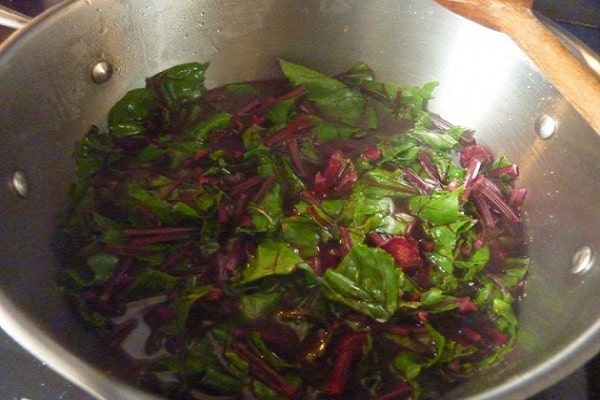
Pickled leaves, petioles
Beet leaves and cuttings can be pickled. Since the structure of the parts of the plant is different, different processing of raw materials is assumed. For a recipe for 1 can of 0.5 liters you will need:
- petioles 250 grams or 200 grams of beet leaves;
- salt - 1 teaspoon;
- sugar - 0.5 teaspoons;
- garlic - 1 clove;
- horseradish - 2 centimeters;
- allspice, black pepper - 5 and 10 pieces each;
- vinegar 70% - 1 milliliter.
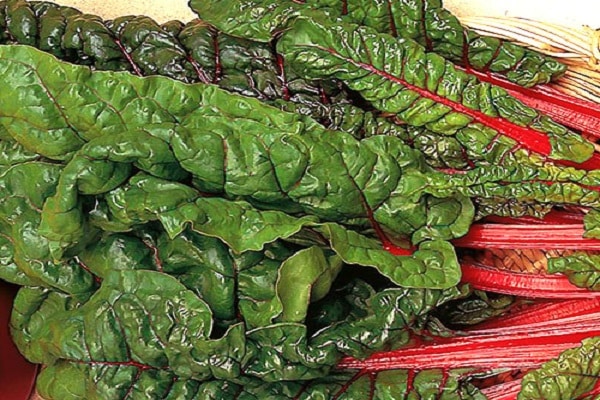
The stalks are harvested by the triple pouring method, that is, the hot marinade is poured, drained, boiled and re-poured 3 times. The leaves are prepared by sterilization, that is, the hot marinade is poured into jars and containers, boiled in water for 5 minutes. The blanks covered with lids are turned over and wrapped in a warm blanket.
Pickled
The method involves the use of leaf stalks. The recipe requires the following ingredients:
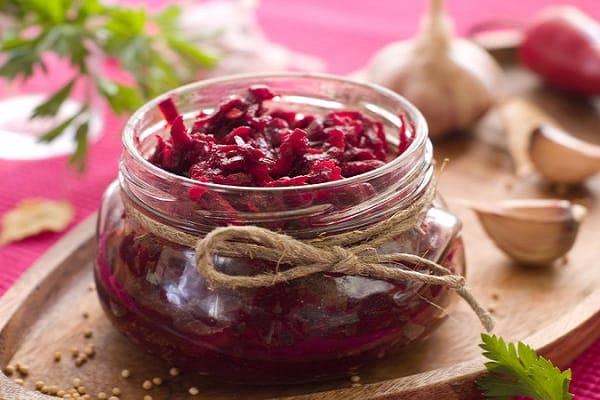
- stems - 1 kilogram;
- garlic - 1 piece;
- salt - 1 tablespoon per liter of water;
- lavrushka - 2 leaves;
- pepper - 10 peas.
The stems are doused with boiling water and tightly placed in jars, garlic and peppercorns cut into slices are placed between the layers, salt is poured into the reconciliation. If you want to get the finished product in a week, then the workpiece is poured with boiling water, kept at room temperature for 2 days and put into the refrigerator. If you fill it with cold water and put it in a cold cellar, the result is achieved in 3 weeks.
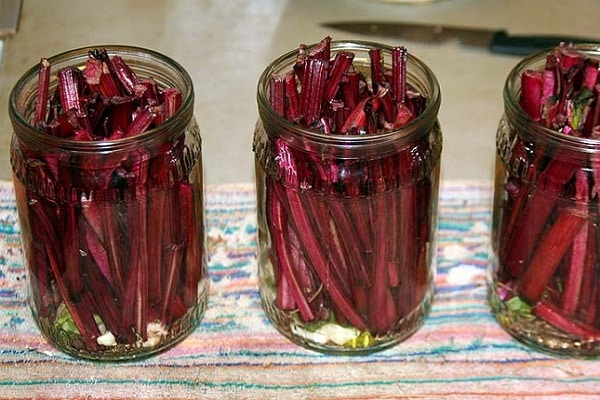
In armenian
The beet tops cooked in Armenian is called borani. Prepared with the following products:
- beet tops - 1 large bunch;
- onions - 1 head;
- garlic - 1 clove;
- salt, herbs, sour cream are added to taste;
- butter.
Finely chopped onions are sautéed in oil, and the shade of gold is obtained. After that, add the chopped tops and stew under a closed lid for 15 minutes, salt and pepper, in the process, you need to periodically stir the mixture. Prepare the sauce by mixing chopped garlic with sour cream and whisking thoroughly with herbs. The dish is served simultaneously with the dressing.
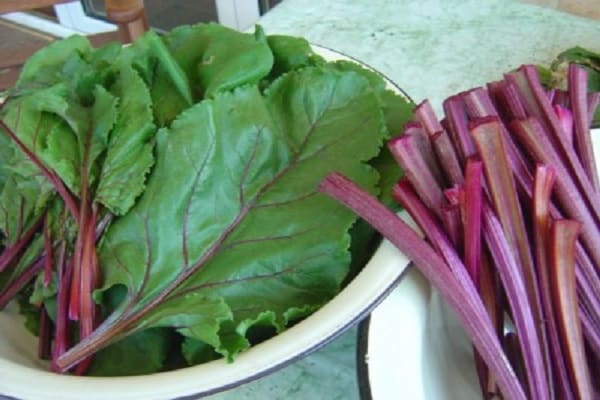
Salting
Salting allows you to keep the tops with the maximum content of nutrients and vitamins. For this, the green leaves are cut and placed in dense layers of 2 centimeters in transparent containers, alternating with salt. The recipe requires a coarse, iodine-free grind... If the tops are too coarse and tough, then it is pre-poured with boiling water and waited for drying.
The storage blank is placed in the refrigerator and used directly in the preparation of the dish. To eliminate the risk of increased salt content in the finished dish, it is recommended to first add the dressing, and only then, if necessary, add additional salt.
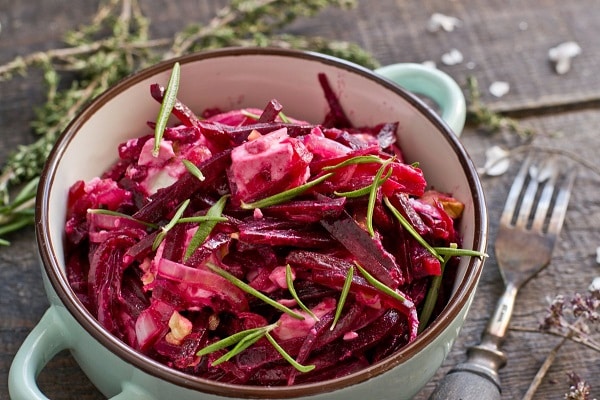
Freezing
Freezing is a great alternative to traditional dressings. The advantage of this option is the minimum required time, the possibility of long-term storage and preservation of useful substances, which is associated with the absence of thermal effects. You can freeze the product in the following ways:
- in plastic bags;
- containers;
- in the form of ice cubes.
Most often, in order to preserve the product, the option of storing in bags is chosen, since it requires a minimum of time and allows you to quickly process large volumes of raw materials.
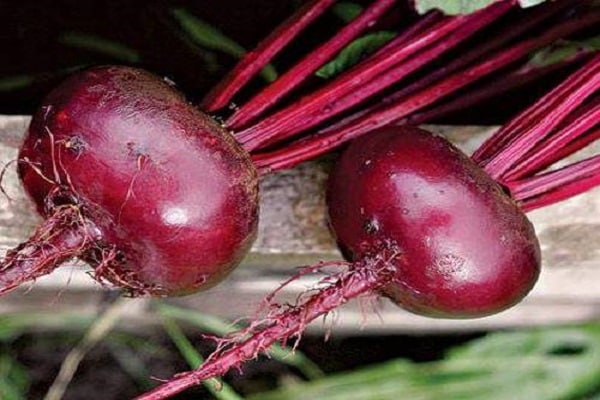
Before freezing, washed beet tops are poured over with boiling water, which makes it softer and more pliable. After drying, the greens are laid out in bags, from which excess air is removed. This will provide better storage of the food and save space in the freezer.
Beet tops can be stored separately from other greens, or combined with herbs. Parsley and dill are good companions for her. This storage option is ideal for making soup dressings, as it allows you to form portioned bags or cubes for 1 use.
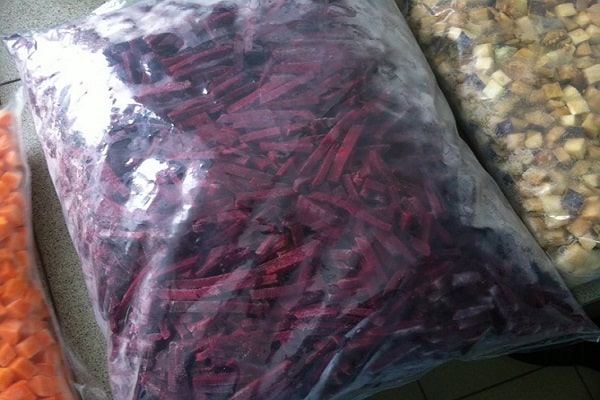
Leafy appetizer
You can roll up the petioles of beets with pepper, this combination will be a great appetizer to the table. If the tops are tender, then you do not need to process the stems with boiling water. Hard shoots are poured over with hot water or boiled for 1 minute. The recipe will require:
- tops - 0.6 kilograms;
- salt - 1.5 teaspoons;
- wine vinegar 6% - 60 milliliters;
- garlic - 3 cloves;
- sweet pepper - 3 pieces.

The petioles are cut into a size of 10 centimeters and placed in sterilized containers with chopped pepper slices, adding garlic evenly. It is not worth ramming the layers too tightly. Salt is added on top. The water is heated to boiling water and carefully poured into the jar to the level of the hangers.Vinegar is added and sterilized for 10 minutes, then covered with lids and sent to cool.
How to store workpieces correctly
The prepared tasty canning can be considered half the work done, but it is equally important to preserve the blanks in winter. The average storage time of closed cans is considered to be 1 year, but the presence of a preservative in the form of vinegar in the composition allows this period to be increased.

You can store containers in the refrigerator, but, in most cases, they choose the conditions of the cellar, since a large number of cans can be stored in such a room. The key to long-term storage is the tightness of containers and the temperature regime, which for conservation should be from 3 C to 15 C.
Before sending to the cellar, you should check the banks for leaks, the containers with the blank are removed when droplets appear. Such tops can be used for the next meal. The second time it is not rolled up, since with repeated heat treatment it loses its qualities, and the absence of such a procedure will not allow long-term storage of the workpiece.
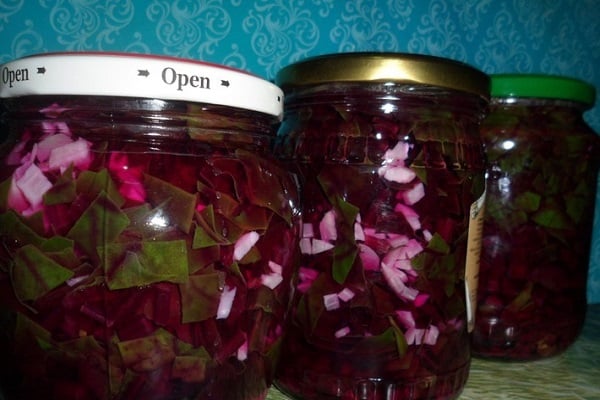


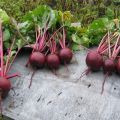
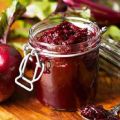
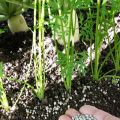
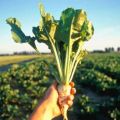
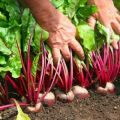
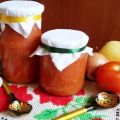

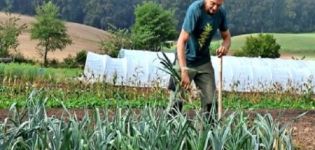
Dear, before you write an article, first improve your literacy.
The article was written very illiterately. Because of what, much is not clear.
For example, the article indicates that vinegar is added before (and not the banks, but wrote Them) closing.
Is it possible to add vinegar to the jar after closing ?! You probably don't even understand what you are writing ...
Your reaction contains an overly emotional assessment of the situation. Let's proceed from the fact that on the Internet all users respect each other, and do not look for minor mistakes, find fault with the style. Judging by your question, you would also need to remember some of the rules of the Russian language. Of course, you cannot add vinegar to the jar after seaming. This is usually clear to everyone without further explanation.